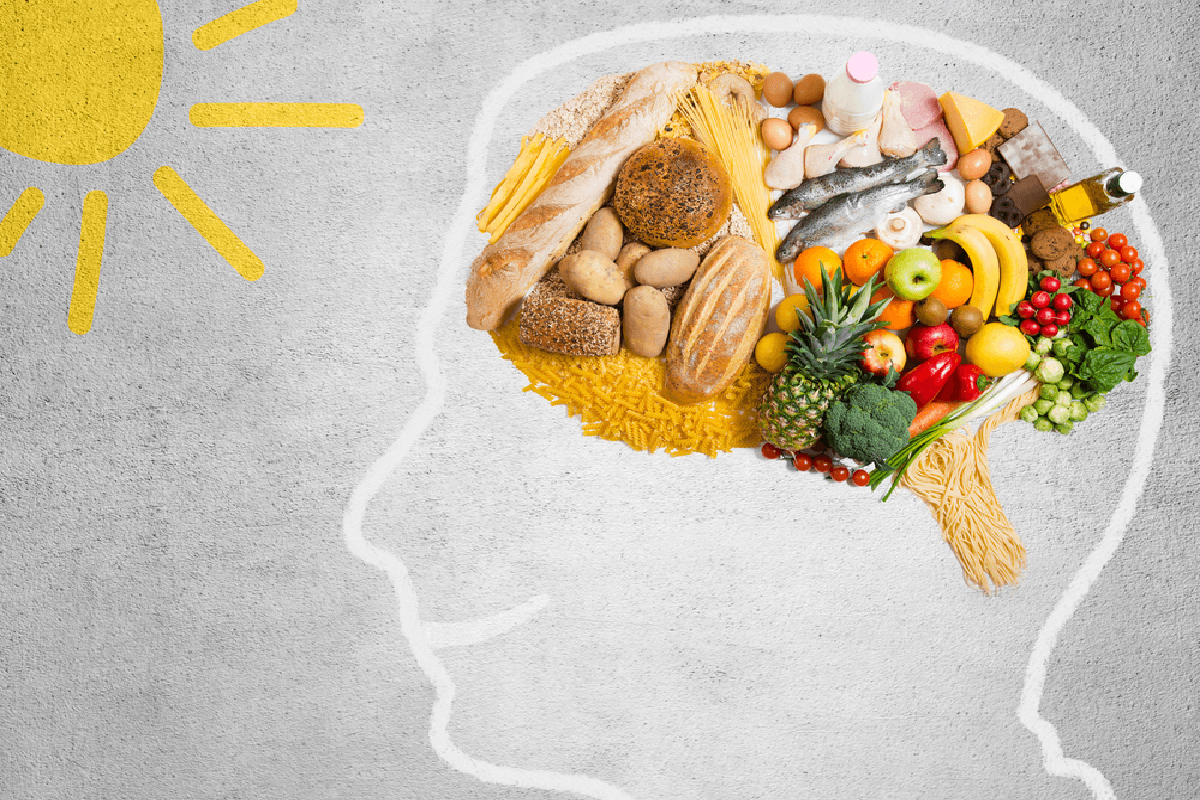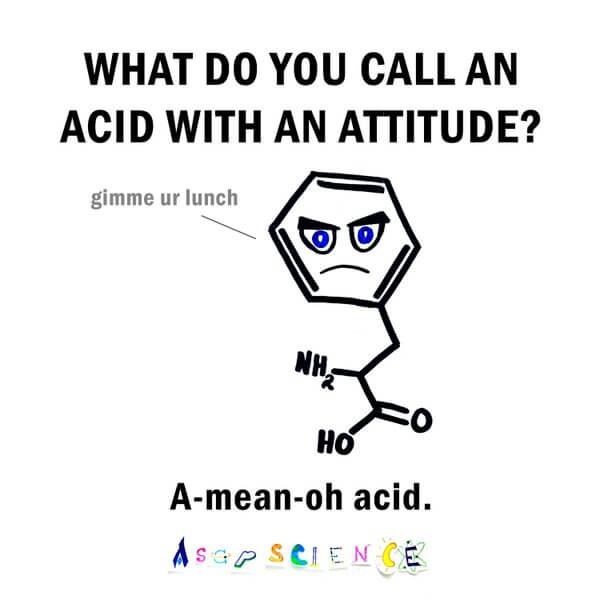The neurotransmitter serotonin is deeply involved in regulating mood and anxiety. If your brain is low on serotonin, you might feel depressed or irritable. So, what can you do to keep up a steady supply of serotonin? Step number one: eat right.

Well over 90 percent of serotonin in our body is made in our gut. But since serotonin can’t cross the blood-brain barrier, it has to be produced in the brain from scratch.
How the brain makes serotonin
Neurons need two things to create serotonin: (1) tryptophan and (2) a couple of enzymes.
1. Tryptophan
Tryptophan is an essential amino acid which we get from our diet. The average western diet is rich in tryptophan. It is particularly plentiful in proteins such as eggs, meats, soybeans and dairy products. Carbohydrates like chocolate, oats, rice or quinoa contain less tryptophan but are still considered good sources.1
But eating a protein rich diet doesn’t guarantee a sufficient tryptophan supply. Paradoxically, quite the opposite is the case. The problem with a protein rich diet is amino acid competition. What does that mean? Proteins contain not only tryptophan, but a number of other amino acids2 which are better at crossing the blood-brain barrier. So, when tryptophan and its amino acid friends come knocking at the blood-brain barrier’s door, tryptophan doesn’t get in.
 Image from Asap Science
Image from Asap Science
With carbohydrates, the situation is reversed because carbohydrates—unlike proteins—raise insulin levels in the blood. Insulin, in turn, decreases the blood levels of the other amino acids but doesn’t affect tryptophan. You could say that insulin removes some competition in favor of tryptophan and thus helps tryptophan cross the blood-brain barrier.3
And indeed, people suffering from seasonal affective disorder (SAD) or premenstrual syndrome (PMS)—which are both expressed through depressed moods—often report carbohydrate cravings, almost as an attempt of self-medication.4 Eating carbohydrate meals which contain some protein might be a good compromise to ensure a steady supply of brain tryptophan.
Carbohydrate meals which contain some protein might help maintaining steady supply of serotonin in your brain.
2. Enzymes
Once tryptophan has crossed the blood-brain barrier, the first enzyme (tryptophan hydroxylase) turns tryptophan into 5-HTP and the second enzyme (decarboxylase) turns 5-HTP into serotonin.
 Serotonin biosynthesis5
Serotonin biosynthesis5
The brain has plenty of these enzymes in stock. What usually causes the bottleneck in serotonin production is the availability of tryptophan.3
Tryptophan supplements
There is some evidence that nutritional supplements containing purified tryptophan raise brain tryptophan levels more efficiently than nutrition. That would make sense, since the supplement doesn’t contain any of the competing amino acids.6
Exercise
Another way to facilitate tryptophan’s entry in the brain is through exercise. When your muscles work hard, they are hungry for amino acids. That works in your favor, because exercise only decreases blood levels of amino acids other than tryptophan.7 Consequently, tryptophan experiences an easier uptake at the blood-brain barrier.
Learn more
Tryptophan plays a role in regulating serotonin levels in the brain, but that’s only one piece of the puzzle. The larger serotonergic system is complex and mysterious. If you want to understand how it works, check out our story on Psychedelic Drugs and the Serotonergic System.
References
-
Tryptophan. Wikipedia. Retrieved on 2017-05-22. ↩
-
Amino acids such as tyrosine, phenylalanine, leucine, isoleucine and valine3 ↩
-
Bear M, Connors BW, Paradiso MA. Neuroscience. Exploring the Brain. 4th edition. Wolters Kluwer. ↩ ↩2 ↩3
-
Møller SE. Serotonin, carbohydrates, and atypical depression. Pharmacol Toxicol. 1992;71 Suppl 1:61-71. Review. PubMed PMID: 1480561 ↩
-
Original work with skeletal structures from Wikimedia Commons by NEUROtiker ↩
-
Wurtman RJ, Hefti F, Melamed E. Precursor control of neurotransmitter synthesis. Pharmacol Rev. 1980 Dec;32(4):315-35. PubMed PMID: 6115400 ↩
-
Blomstrand E, Hassmén P, Ekblom B, et al. Administration of branched-chain amino acids during sustained exercise–effects on performance and on plasma concentration of some amino acids. Eur J Appl Physiol Occup Physiol. 1991;63(2):83-8. PubMed PMID: 1748109. ↩
